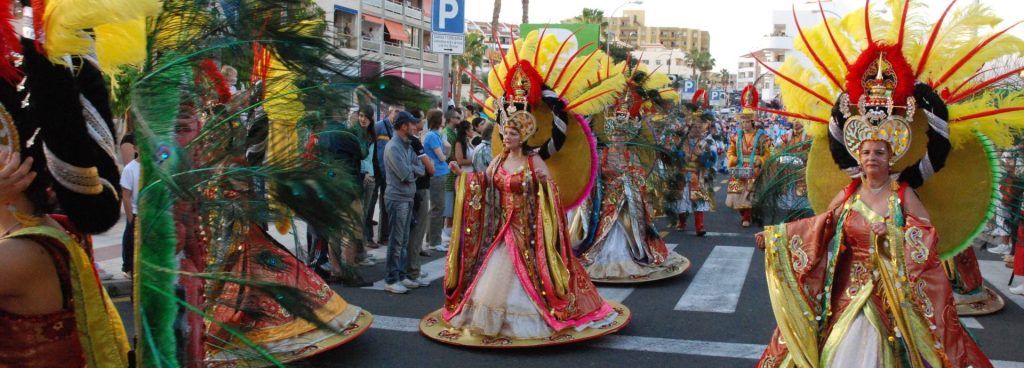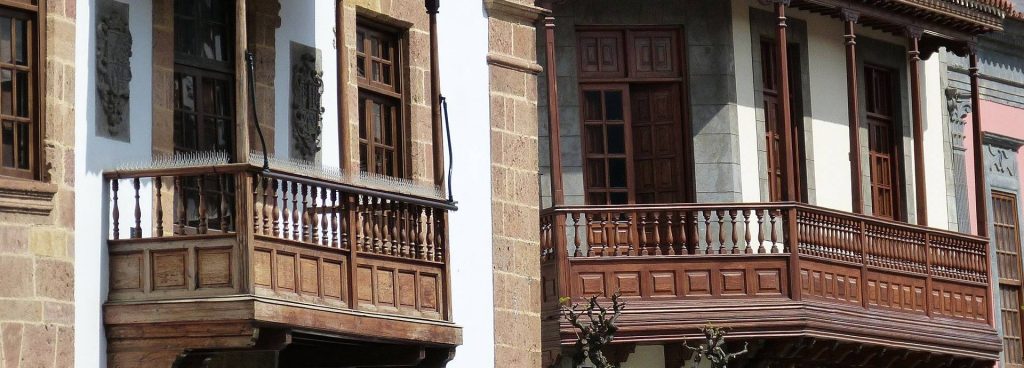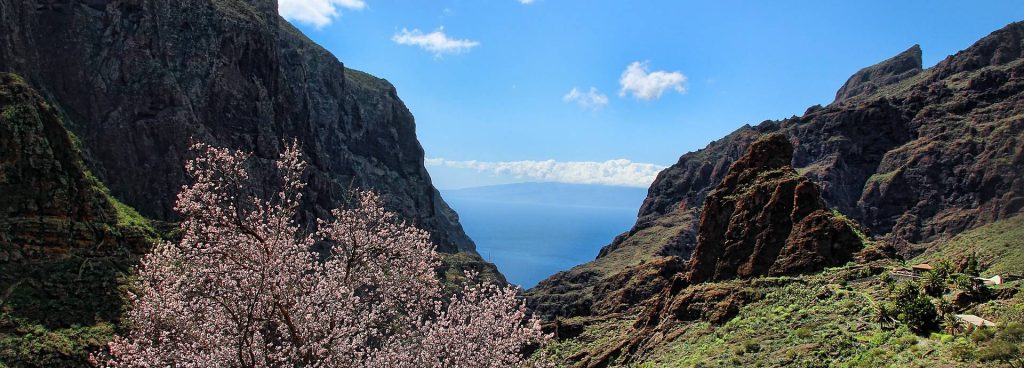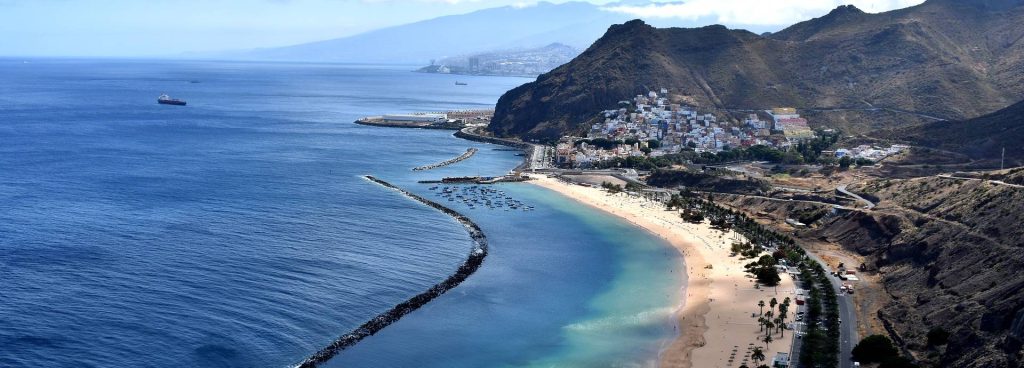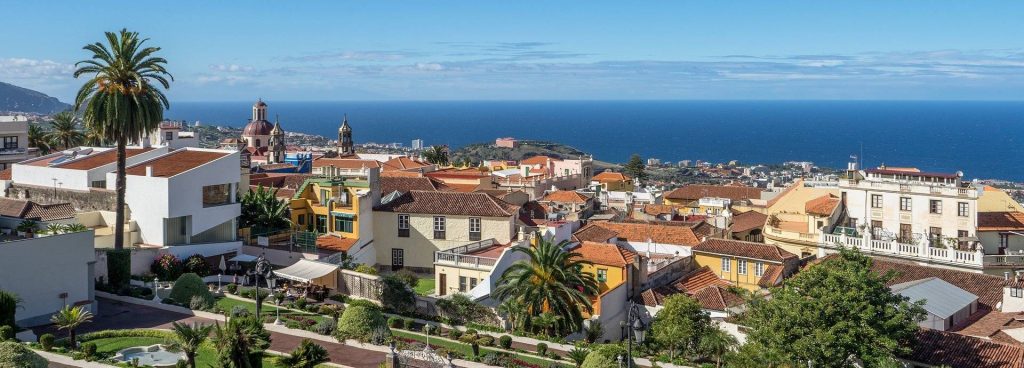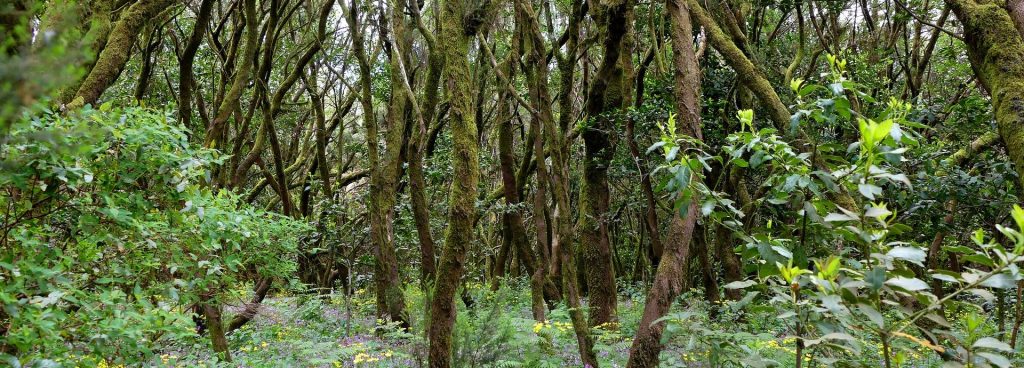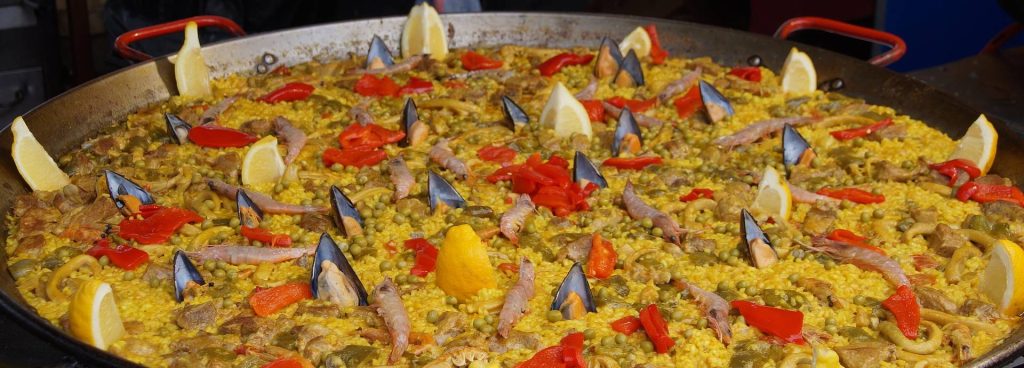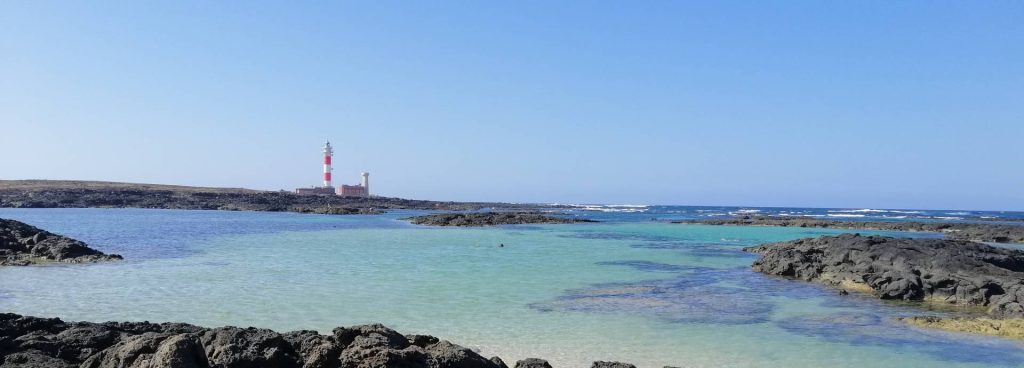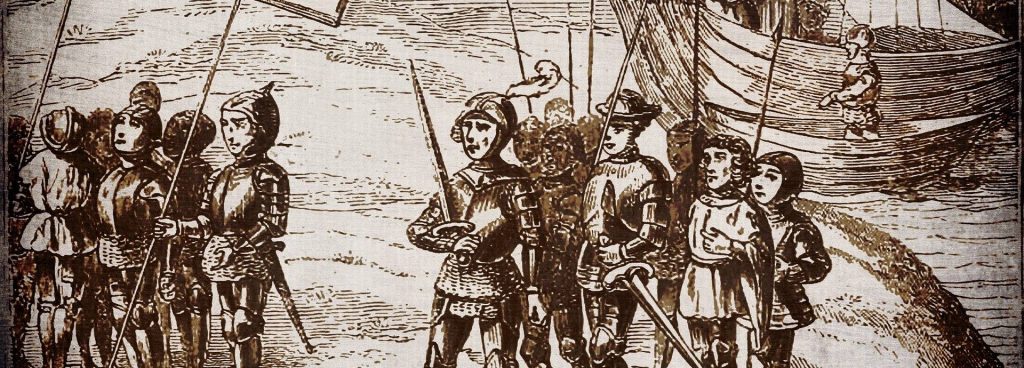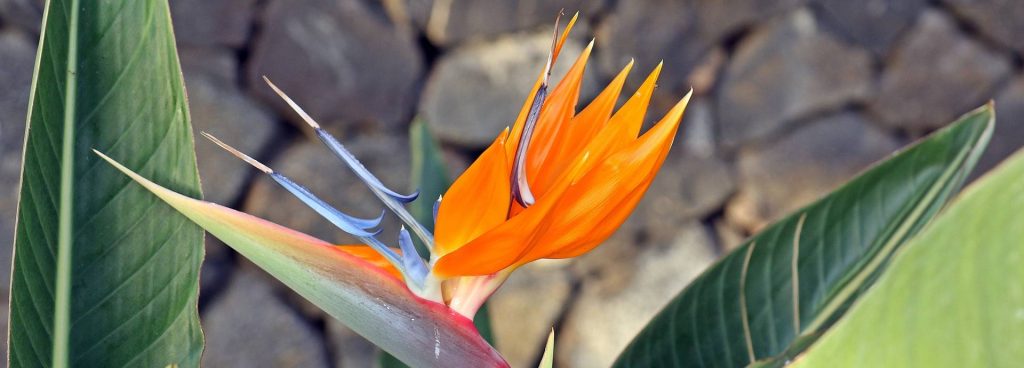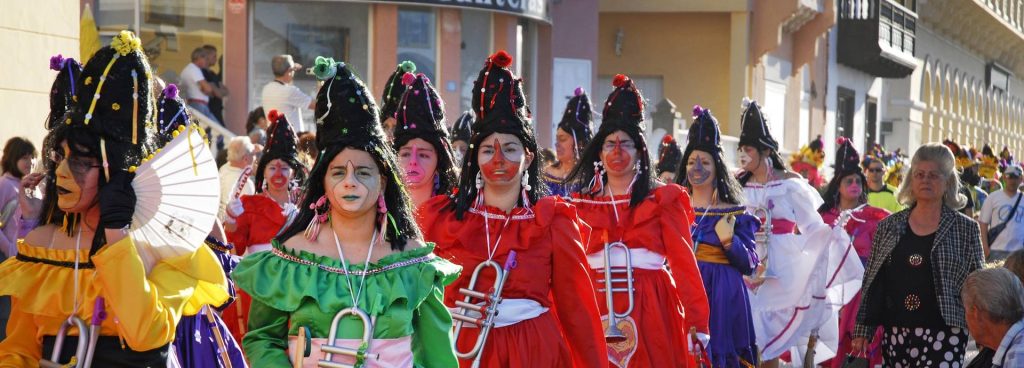Geographical
The second smallest of the seven Canary Islands measures around 25 km in diameter. It is located about 300 km west of the African coast. The island is of volcanic origin. The last volcano erupted on La Gomera about three million years ago. Over the years, the face of the island has changed due to weathering and erosion. Spectacular gorges and imposing steep slopes were formed.
The highest mountain in Gomera is Garajonay at 1.487 m. The national park of the same name extends around the mountain and takes up around 10% of the island's area. Because of its species-rich laurel forest, the park was declared a World Heritage Site by UNESCO in 1986. It is the largest contiguous laurel forest on earth.
Climatically, the island is divided into a drier south and a wetter north half. The island's capital is San Sebastian, home to around 6.500 of the island's 16.000 inhabitants. The large ferry port and the island administration are also located here. Most of the island's population lives from agriculture and tourism. Fishing is hardly possible as there are heavy seas on the north side of the island.
The organs
On the north coast is the high rock massif Los Organos, which is considered to be the most beautiful basalt formation in the Canary Islands. Like slender organ pipes, the cliffs rise 80 m high and over a width of 200 m from the sea. They represent the remains of cooled lava masses from a volcano. In the course of time, the rock was exposed through erosion and washed out by the sea and rain.
This geological highlight can be discovered on a boat trip to the north coast. Even if the Atlantic Ocean on the north coast often shows its rough side and the columns as well as the boat lapped by waves and spray, the boat tour is one of the most popular excursions on the island. On the way there, the ship passes impressive stretches of coastline as well as pretty little towns and bays. You can often see whales and dolphins along the way. These excursions can be booked from Playa Santiago and Valle Gran Rey.
Flora and fauna
The beautiful island is known for its lush green north and the wildly romantic, somewhat barren south. The flora with its many endemic species is unique. Many of the plants can only be found on Gomera or some other Canary Islands. The flora can be clearly identified as north and south vegetation. The almost 1.500 m high rock massif in the interior of the almost circular island acts as a climatic divide. Benefiting from the climatic and geographical division of Gomera, numerous plants adapted to the special conditions and continued to develop. Trade winds create lush greenery in the north, while succulents characterize the dry south.
The north is characterized by moderate temperatures and higher humidity. The trade winds rise on the slopes in the north of Gomera and provide it with moisture. The fascinating Garajonay National Park lies in this cloud mist for much of the year. The canopy of leaves in the cloud forest filters the moisture from the clouds and transfers it to the island's water reservoirs. In this way, the springs, streams and reservoirs are supplied and at the same time the flourishing of banana trees, papayas, mangoes, avocados and oranges in other places on the island is ensured.
The sunny south, on the other hand, is mainly dominated by drought-resistant vegetation. Various succulents have found their ecological niche here. These include the thick-leaf and milkweed plants. They are able to store water in their thick leaves and stems over a longer period of time and thus protect themselves from dehydration.
The island fauna, on the other hand, is less varied. The Atlantic has always had a limiting effect on the colonization of the island by animals. The bats are the only mammals that originally settled on La Gomera. Goats, rabbits, rats and mice were added as cultural companions to humans in the course of settlement.
The vertebrate fauna consists mostly of birds and reptiles, with some endemic species also represented. The invertebrates of Gomera are more diverse with around 1.000 species. 150 species are endemic and therefore particularly protected. The life forms in the Atlantic, on the other hand, are very diverse, with whale watching, for example, you can look forward to encounters with free-living whales and dolphins off La Gomera.
Whale Watching
The chance to meet playful dolphins on a whale-watching tour by boat is available on many days of the year. With a little luck, some whales will show up out on the open sea off La Gomera.
21 species of dolphins have already been sighted here, 6 of them as permanent guests. The bottlenose dolphins are the most common. These are about 3-4 m long and have a dark color at the top and light at the bottom. The intelligent mammals often accompany the boats for hours.
But pilot and beaked whales often stay very close to the coast. Sometimes even large whales such as sperm, fin, mink or sei whales are sighted. A special highlight is the large group of pilot whales living between Tenerife and La Gomera. The herd is estimated at around 300 whales and is very shy. The 6-7 m long sea creatures can be recognized when whale watching by their rounded dorsal fin and of course the blow, their fountain enriched with water and breath vapor.
Most boat trips start early in the morning in Vueltas, the small port of the Valle Gran Rey, and promise wonderful hours on the Atlantic. If you book an afternoon ride, you might experience one of the wonderful sunsets that La Gomera has to offer on the way back.
Garajonay Park
One of the special sights in the heart of the island is the evergreen Garajonay cloud forest - a real hiking paradise. The national park, which was declared a World Heritage Site by UNESCO in 1986 because of its uniqueness and its diverse natural wealth, is overgrown by a dense, green forest that is home to rare plant species due to the humid climate. With its unique ecosystem, the laurel forest is considered a remnant of the subtropical forests that covered the central area during the Tertiary. Today more than half of the laurisilva population of the entire Canary Islands is on La Gomera. While these plants disappeared in Europe during the Ice Ages, they were able to survive on some Canary Islands, including La Gomera. There are different types of laurel, some over 15 m high tree heather as well as numerous mosses and lichens that give the forest a magical flair.
The national park area lies within the central plateau and covers about 10% of the total area of La Gomera. A wonderful view can be enjoyed from the highest point of the national park at 1.487 m. In good weather you can see four of the Canary Islands from here: El Hierro, La Palma, Tenerife and Gran Canaria.
If you would like to receive information about the landscape and nature of Gomera, the visitor center Juego de Bola on the edge of the national park is spot on.
Hiking on La Gomera
When hiking on La Gomera, the island opens up in a particularly intense way. The most beautiful places on the island can be reached via old donkey paths, small hiking trails and leisurely forest paths - past imposing rock massifs, through deep gorges or wildly romantic forests.
The Valle Gran Rey in the southwest, but also Vallehermoso and Hermigua in the north of the island are ideal starting points for tours to a wide variety of landscapes. From here, wonderful paths lead through lush forests to breathtaking viewpoints.
In order to be able to fully enjoy the hike, you should bring warm, rainproof clothing with you for tours above 1.000 m. Durable, sturdy shoes are a must on all tours.
The best way to protect yourself against the sun is with a sun hat and sun lotion with a high sun protection factor. You should also always have plenty of drinking water with you. Hikers with little experience or who are not familiar with the area can join a guided hiking or trekking tour. The guides provide competent information about the flora and fauna and inform you about the nature that you are hiking through.

